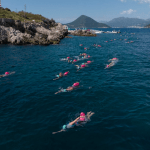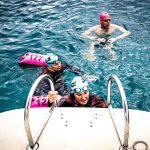Getting comfortable being uncomfortable in preparation for Neptune Steps
“Today we’re going to simulate Neptune Steps event, as close as we can without having you climb over the walls. I’m going to be taking you through cold water acclimatisation, being comfortable being uncomfortable, and some healthy hardship with some work in the pool, and then some exercises in the gym.”
I’d found myself at Parliament Hill Lido for a training day with Ross Edgley ahead of Neptune Steps at the end of March. Neptune Steps is an open water swimming obstacle race created by Red Bull. While only 420m long, it takes place in sub-10 degree water and participants have to make their way up a flight of seven locks in a Glasgow canal using scrambling nets, ropes and make-shift ladders. It is billed as the toughest open water race in the UK, and I’m not about to dispute that.
As with many people, Ross Edgley’s swim around the country has inspired me to push the boundaries of what I can do. As someone who can swim, but not do much else, I’ve decided that 2019 is my year to become more of a hybrid athlete, rather than just able to perform in water.
I’m the result of SAID – the scientific principle of Specific Adaptation to Imposed Demands. The only demands I’ve adapted to for the last few years have been swimming, which has been what I’ve needed to do for my previous endeavours. But now, it’s time to diversify.
While my swimming and cold water tolerance abilities are roughly where they need to be for Neptune Steps, when it comes to climbing rope ladders, I am literally a fish out of water, and this was being made brutally clear at today’s training session.
While it was wonderfully sunny at Parliament Hill Lido, the water was only around 6 degrees. Still, I was excited to swim, so was one of the first to get in.
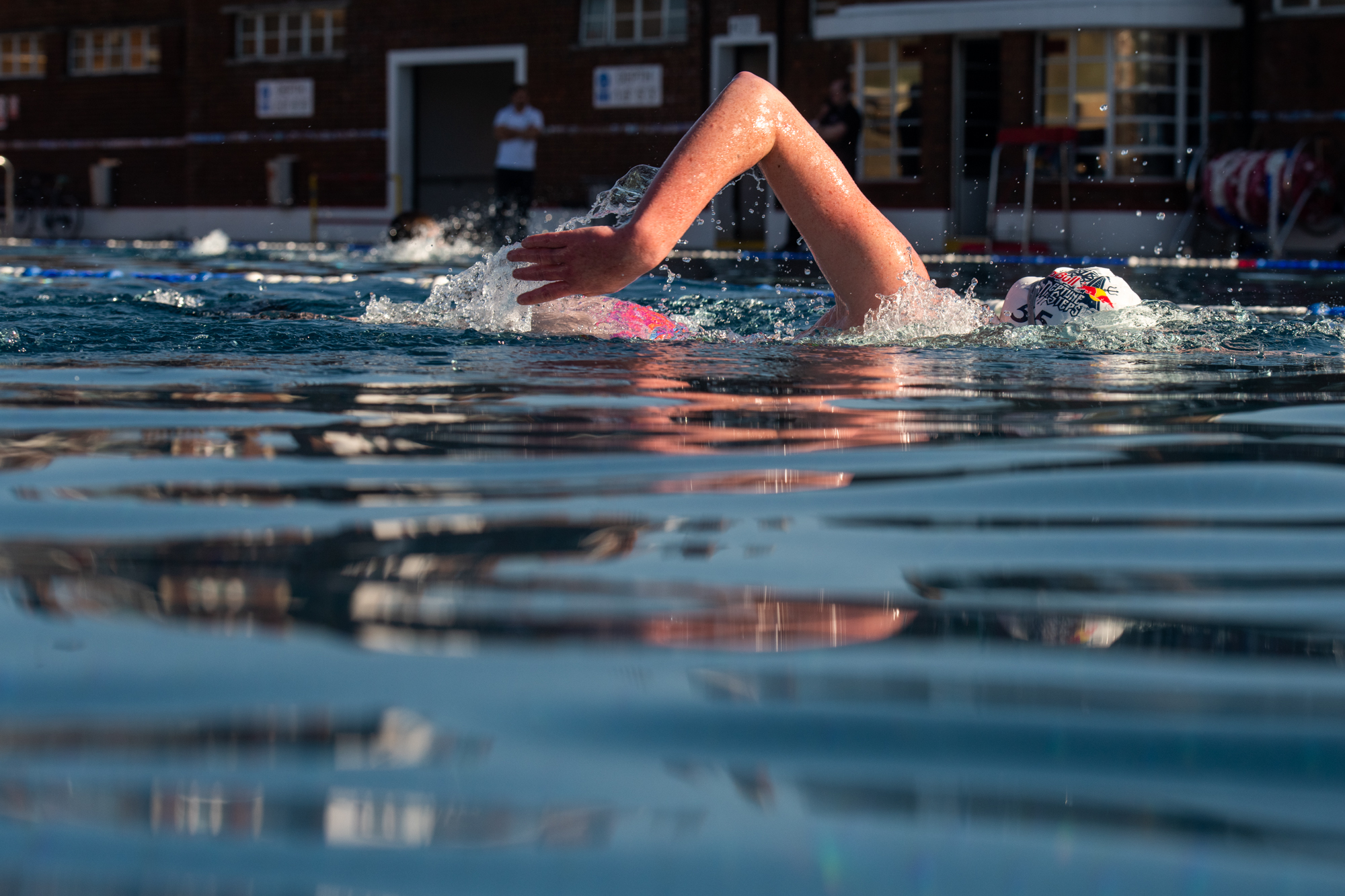
In my comfort zone – swimming in 6 degree water, without a wetsuit
Cold water acclimatisation
Ross gave us two minutes to get used to the water, replicating what we will get at the start of Neptune Steps.
“It’s important to get your face under and get comfortable being in the water,” Ross explained from the side. “In cold water you tend to breathe more heavily, and that brings you closer to your lactic threshold; so, specifically for Neptune Steps, once you’ve got to the lock and need to climb, you’re already fatigued.”
Then he set us off, swimming repeats of two lengths, with our partner pouring buckets of icy water over us. We did shoulder dips to simulate the different stress on our shoulders, which was something new for me. Even so, I was feeling pretty good. I’d been complimented on my pacing, which I was pleased about, until Ross made the insightful point that: “Neptune Steps doesn’t care about your pacing, it doesn’t care about your race strategy. You can be the best swimmer and then fall to pieces when climbing and water’s hitting you in the face from on high.”
Then it occurred to me – maybe Neptune Steps isn’t a swimming race with bit of climbing, maybe it’s a climbing race with a bit of swimming in between.
After warming up and getting changed, we headed to the gym.
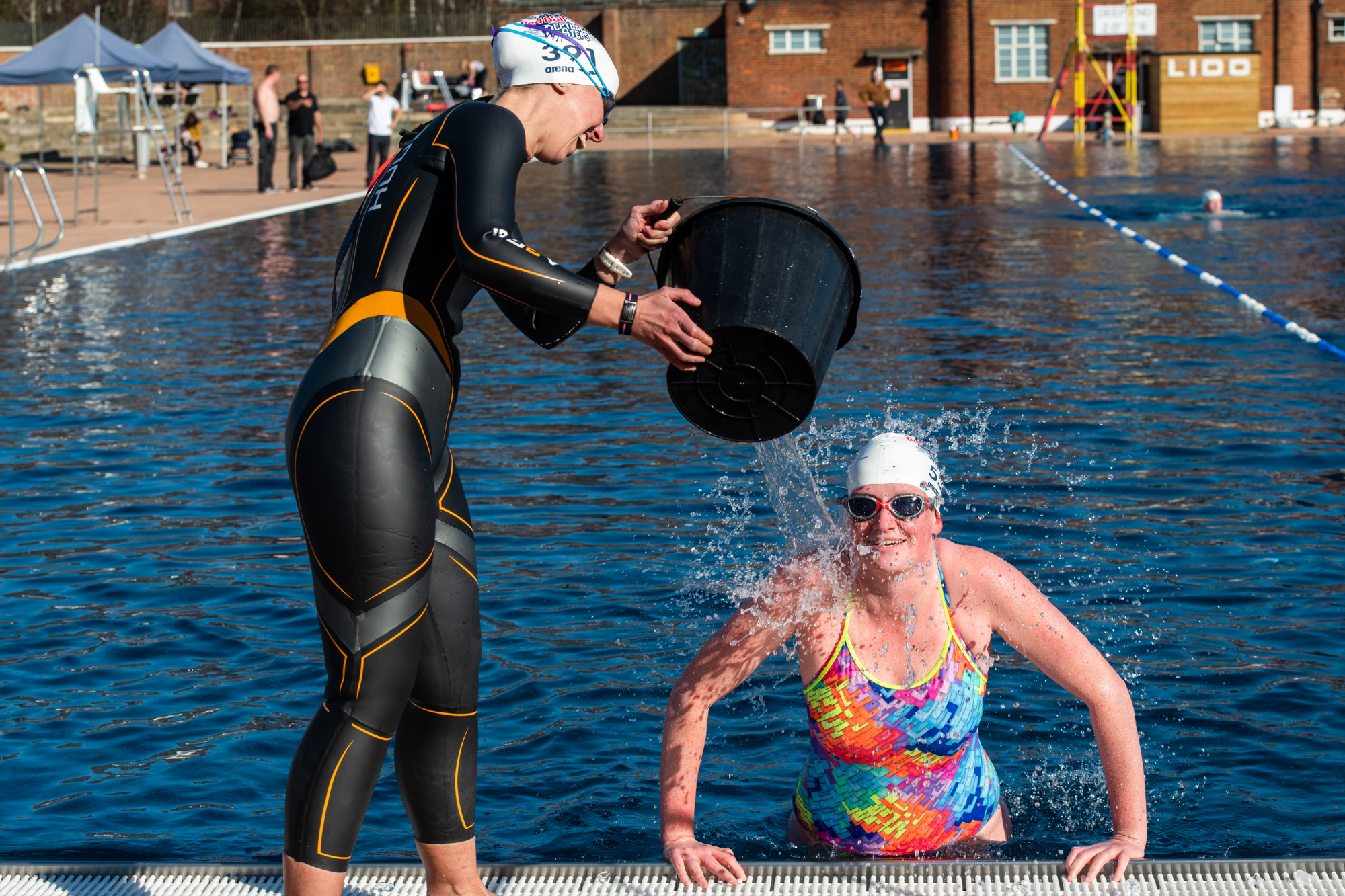
Still smiling despite having cold water poured over my head
Applying stress and stimuli to our shoulders
Ross gently explained that during Neptune Steps there’s no let up on your shoulders, as you’re either swimming, or hauling yourself out of the water, up the lock, or over the gates, so we were going to be doing some press ups – but with a twist to help us improve our neurological capacity for explosive movement. To give us feedback on if we were heavy handed we would be jumping with our hands from the floor onto the backs of two people planking either side of us.
But… I can’t do push ups. And I certainly can’t ‘jump’ with my hands while doing them.
Still, I tried. And Ross had to help pull me up with an elastic loop as my arms aren’t used to any form of explosive movement.
Next, Ross made us endure a 15-minute stress test on our shoulders. We started from a plank position and then added press ups with “spiderman” (move your leg as if you’re climbing) and “scorpion” variations (leg up in the air like a scorpion tail). If my abs the day after were anything to go by, these exercises certainly strengthen your core.
After that, we tried press ups with a clap in between. There was the (in my case, essential) concession that as long as we tried to get our hands a few millimetres off the ground it would still help our bodies practise converting sheer muscular strength into explosive movement, which would help with reactions and explosive movements when climbing.
Our final exercise was “duck walks”, a ridiculous looking exercise walking in a squat position to improve the mobility of your legs and strengthen the lower back. I walked more like a gorilla and not at any sort of speed, but it looked very funny.
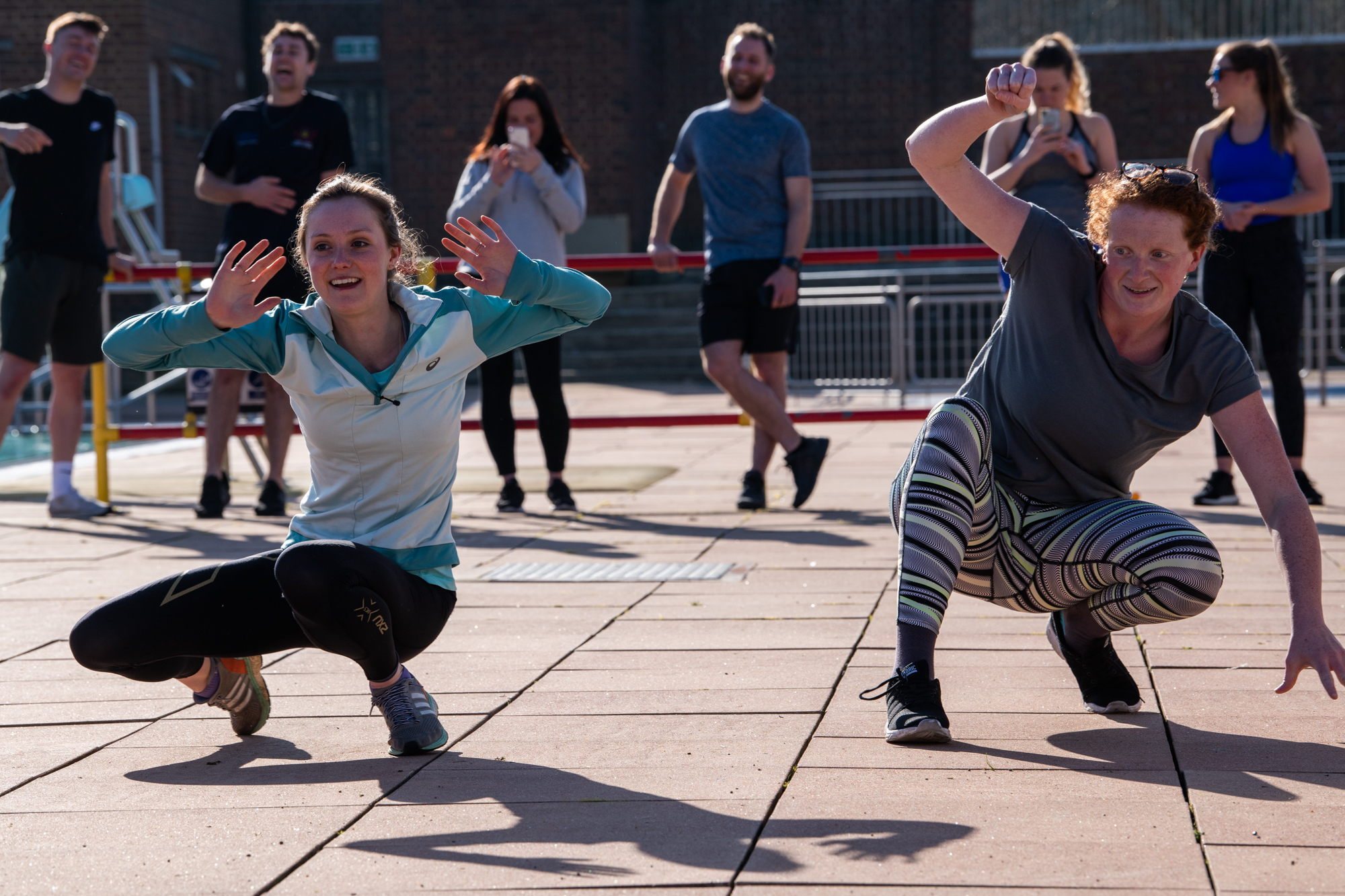
Definitely out of my comfort zone here
Healthy Hardship and Adversity training
During lots of his sporting expeditions, Ross has got used to being comfortable being uncomfortable. To simulate that at Parliament Hill Lido, on a sunny Tuesday, he had buckets of water thrown over us as we did dips between lengths. But I also had to get comfortable being uncomfortable with putting unfamiliar stress and strain on my shoulders and being in a group trying something I know I’m not good at. I’m happy in cold water, but my uncomfortable area is on land. So, as well as testing muscles and exercises I’d never done before, I also had to become comfortable being mentally uncomfortable.
Whenever I’m with people on land, particularly about to do exercise, I feel exposed, tall, out of shape and out of place. But one thing Ross touched on during his GB Swim and expands on in his World’s Fittest Tour is that our bodies are instruments, not ornaments. Over the past years I’ve been honing mine into an instrument for swimming long distances in cool water and it has successfully taken me across the English Channel and Lake Windermere to name a couple. The question now is, can I adapt it into an instrument to carry me up Neptune Steps?
In his Word’s Fittest Tour talk, Ross mentioned that you can overcome something that if experienced all in one go might destroy you by gradually increasing your exposure to it. When you’re uncomfortable, you need to consider if that thing is going to do lasting damage or if it will make you tougher.
I’ve hidden in the pool and open water for a long time and that’s become my comfort zone. While it makes me uncomfortable – currently – maybe through combining swimming with other activities, I’ll become more of a hybrid athlete, and more comfortable within myself.
Swimming will always be my go-to sport, and in the river and lake with friends is better than anything, but there are so many other awesome sports I’d like to try: yoga, SUP boarding, windsurfing, pilates, body attack classes, spin, cycling, climbing and others. Doing other activities will not only complement your swimming but diversify your fitness, strength and muscle usage too!
And first on the list, in preparation for Neptune Steps, I’m getting climbing lessons.
If you’d like to join me at Neptune Steps, they’ve just released another women’s wave, and Ross’s World’s Fittest Tour has dates in venues around the country.
www.seetickets.com/tour/ross-edgley-the-world-s-fittest-tour
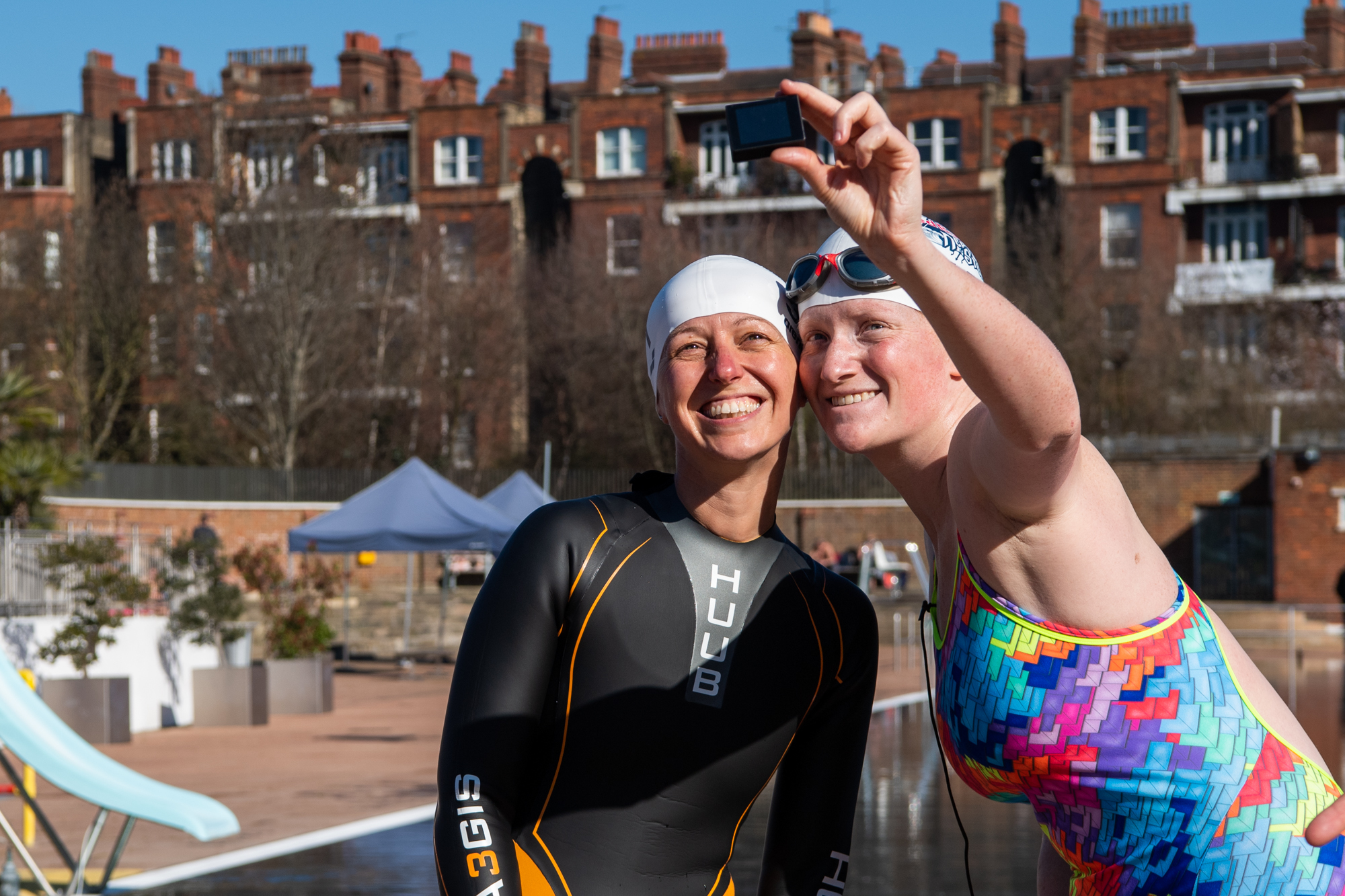
With Helen Webster, Editor 220 Triathlon





